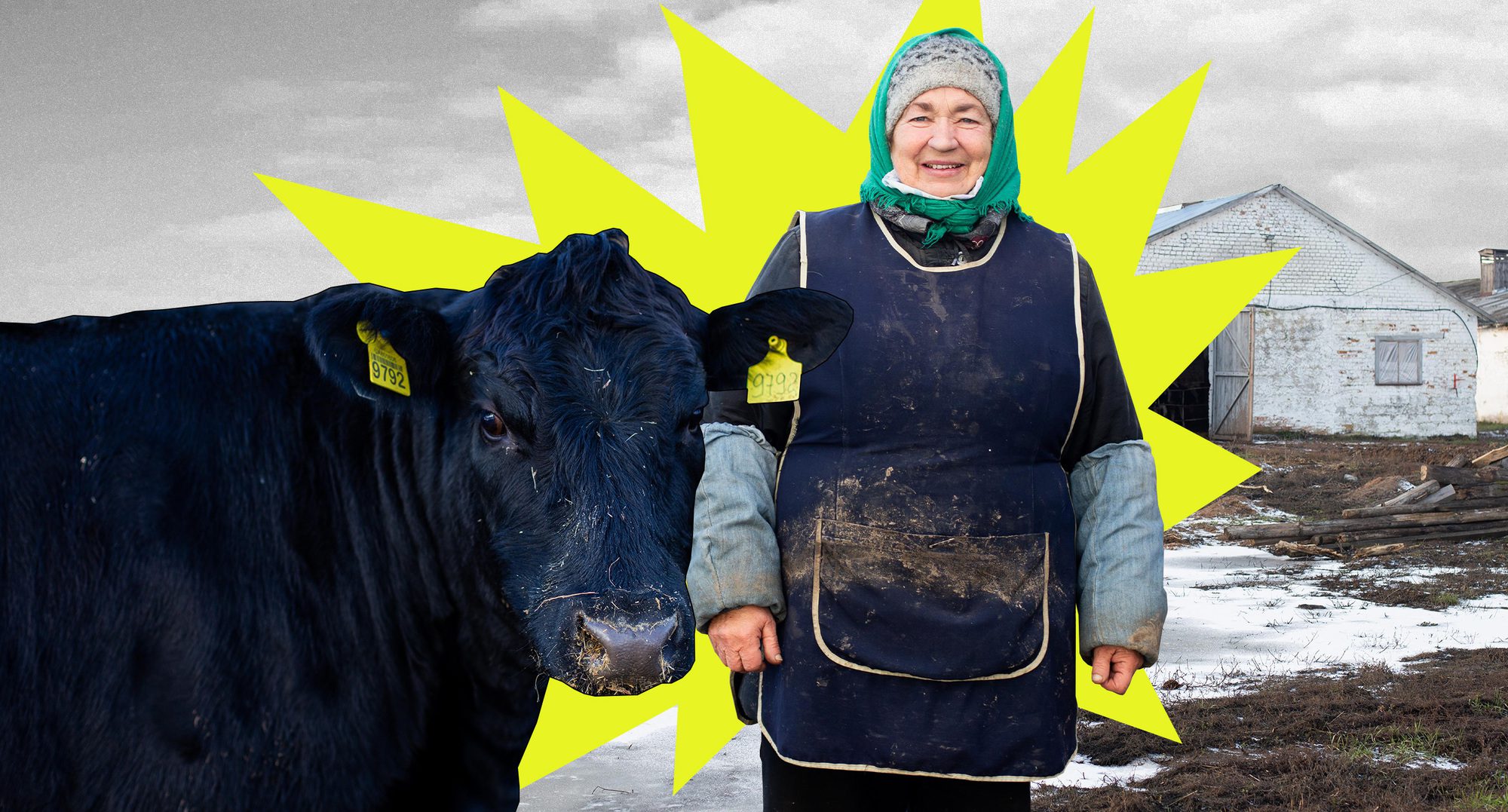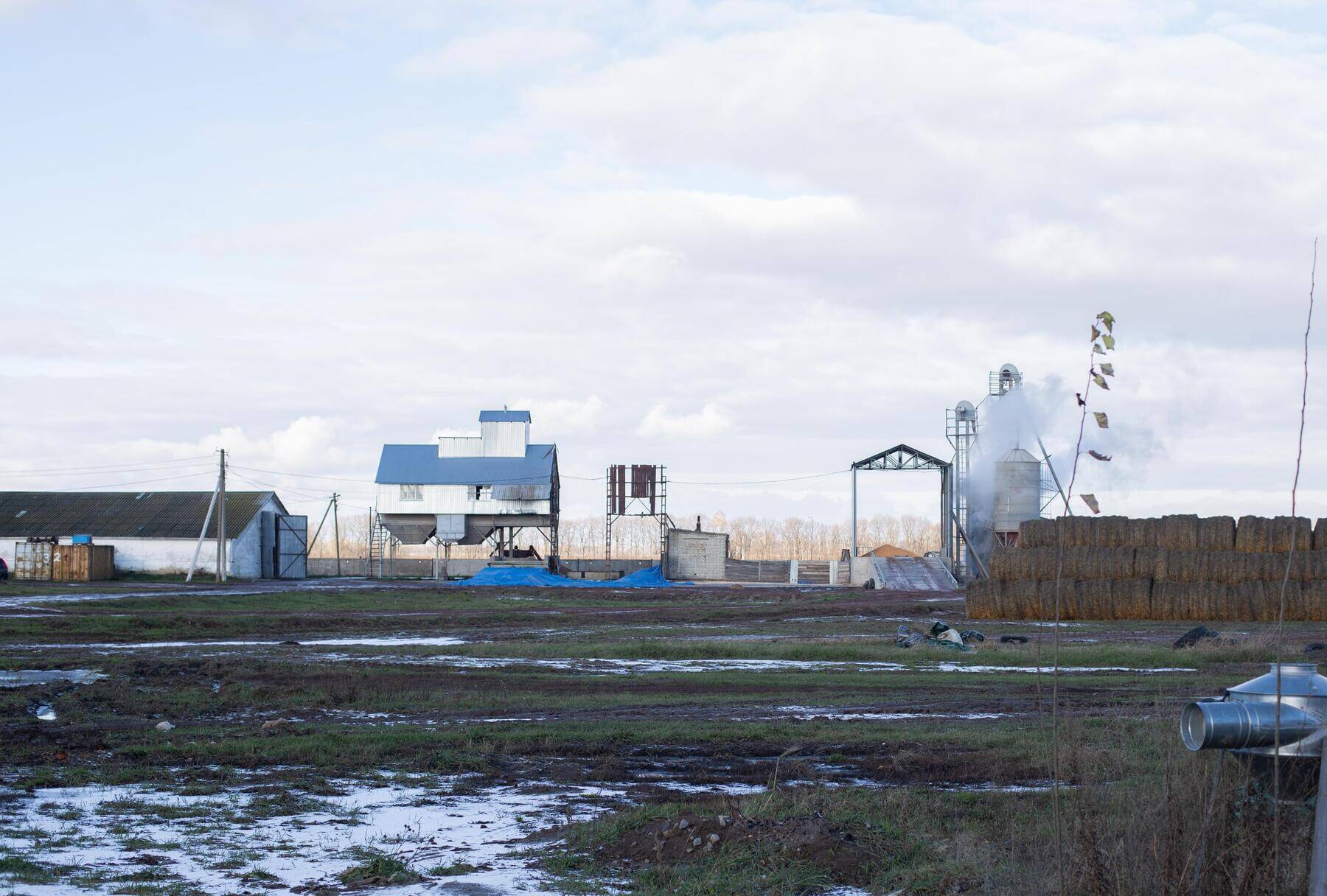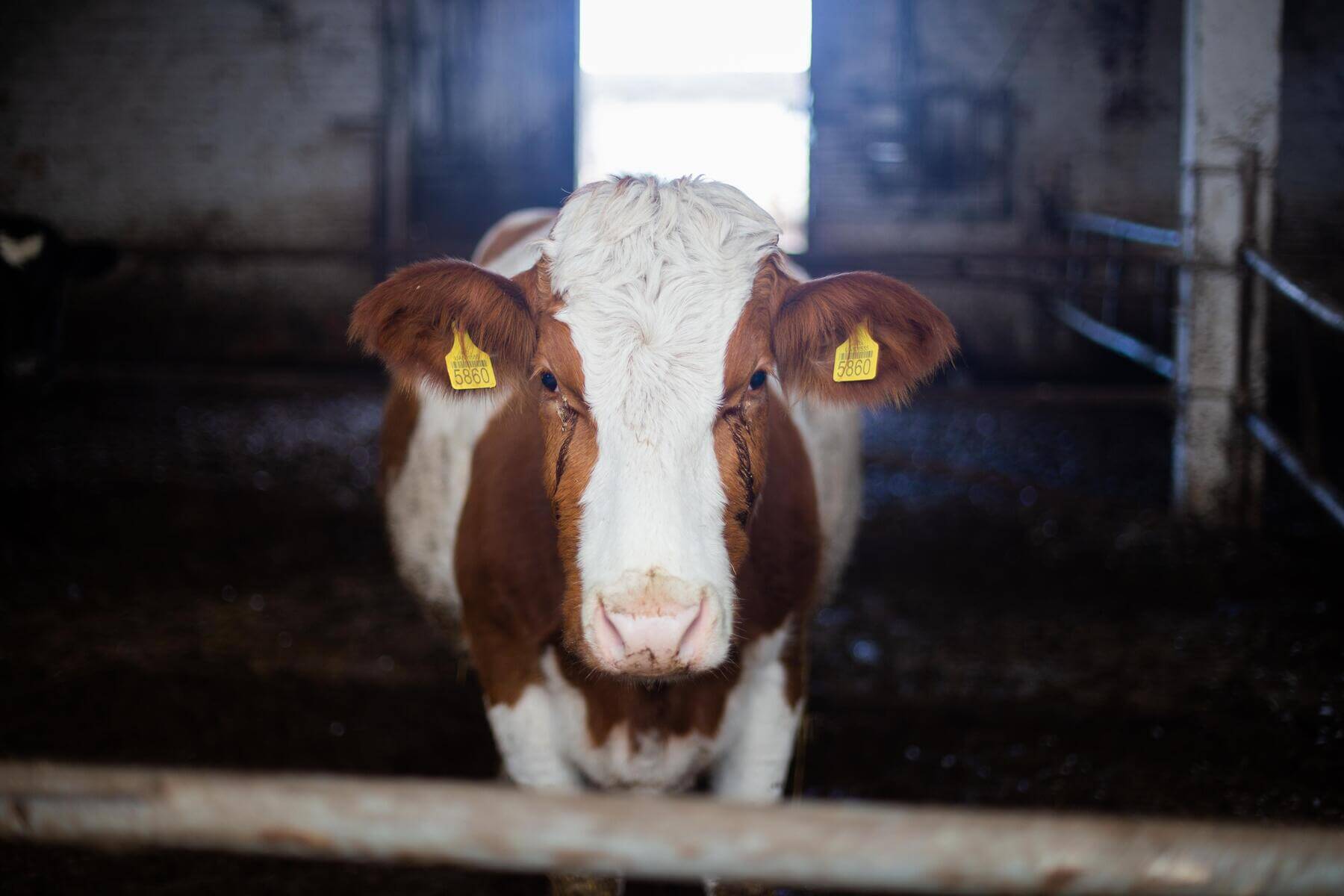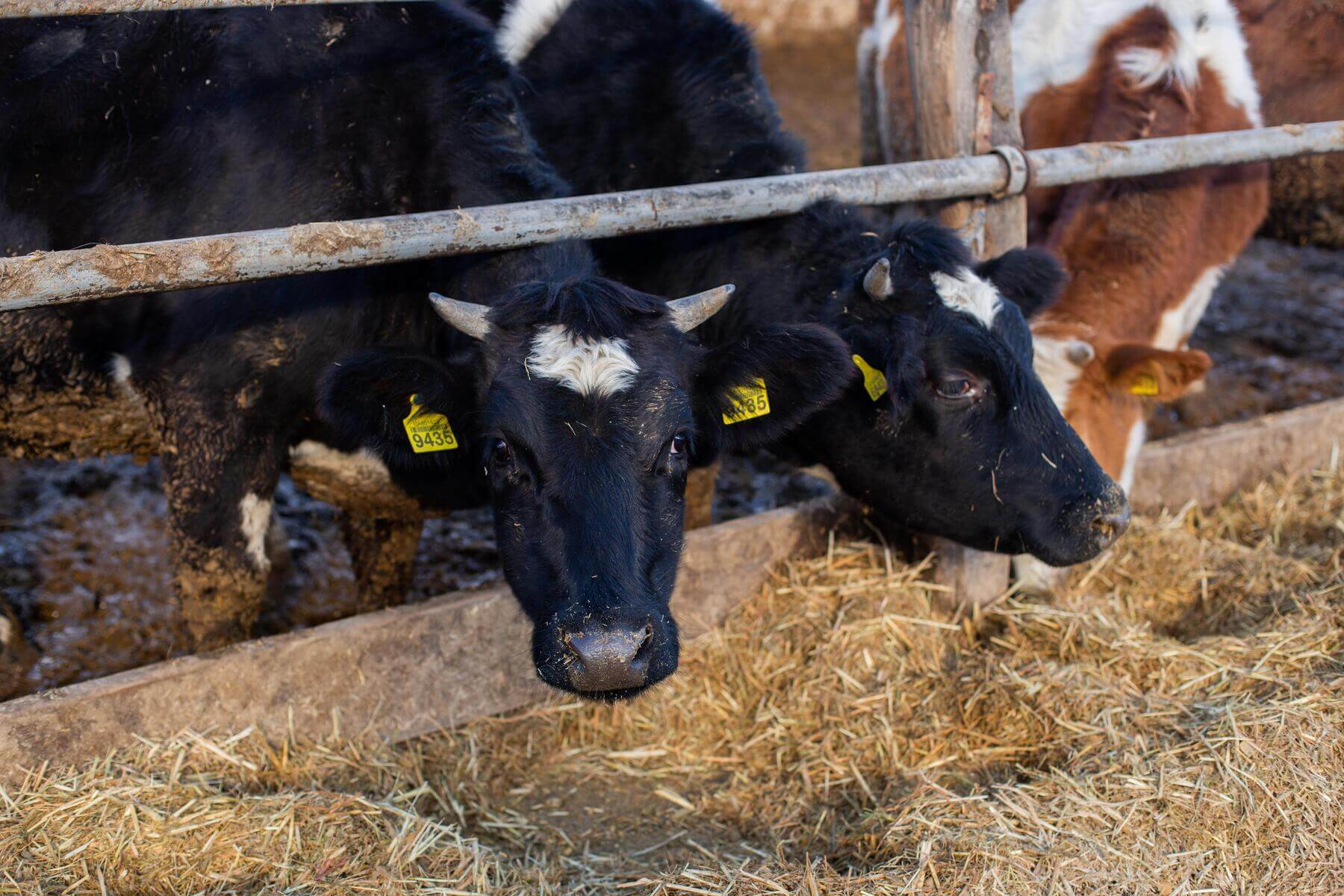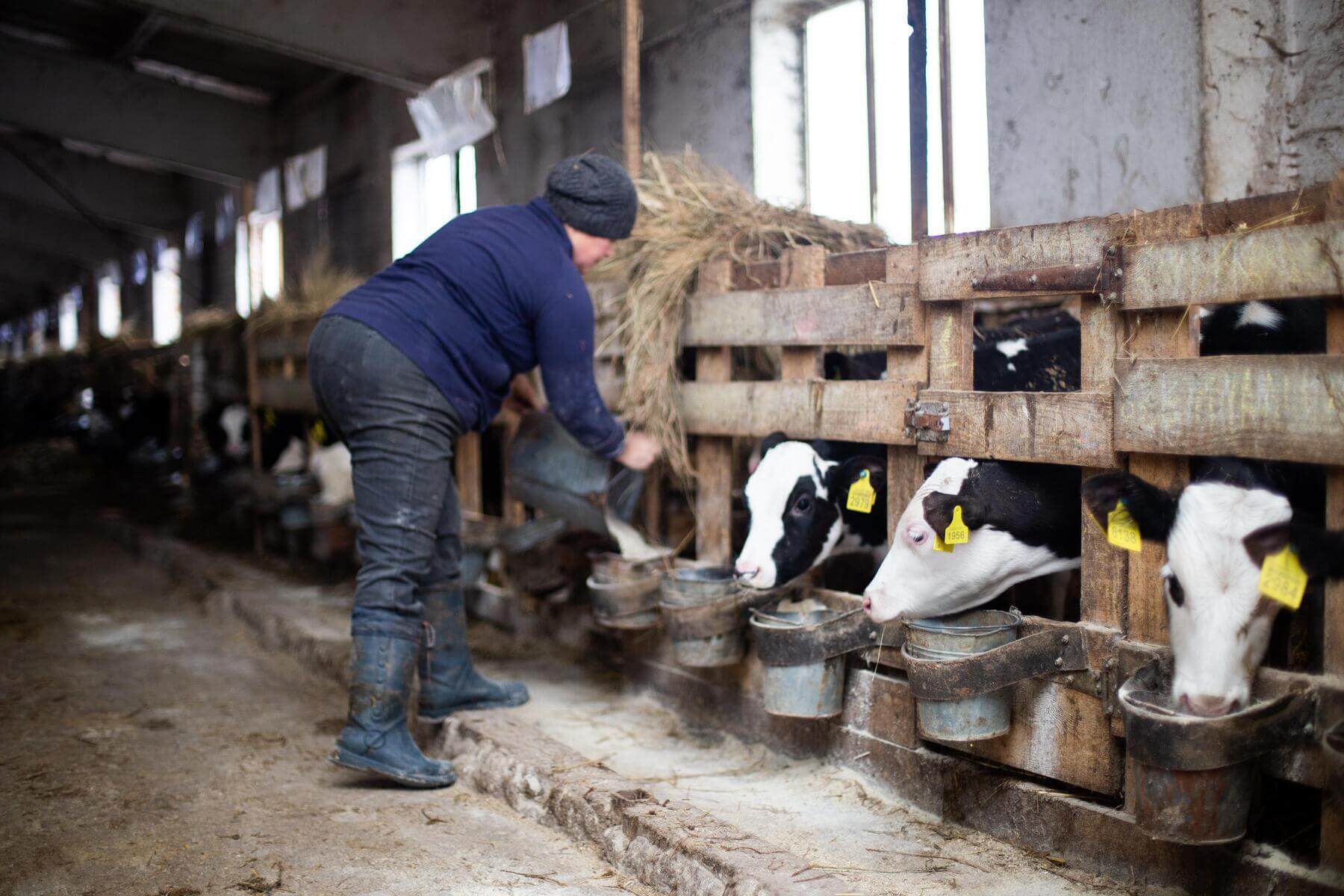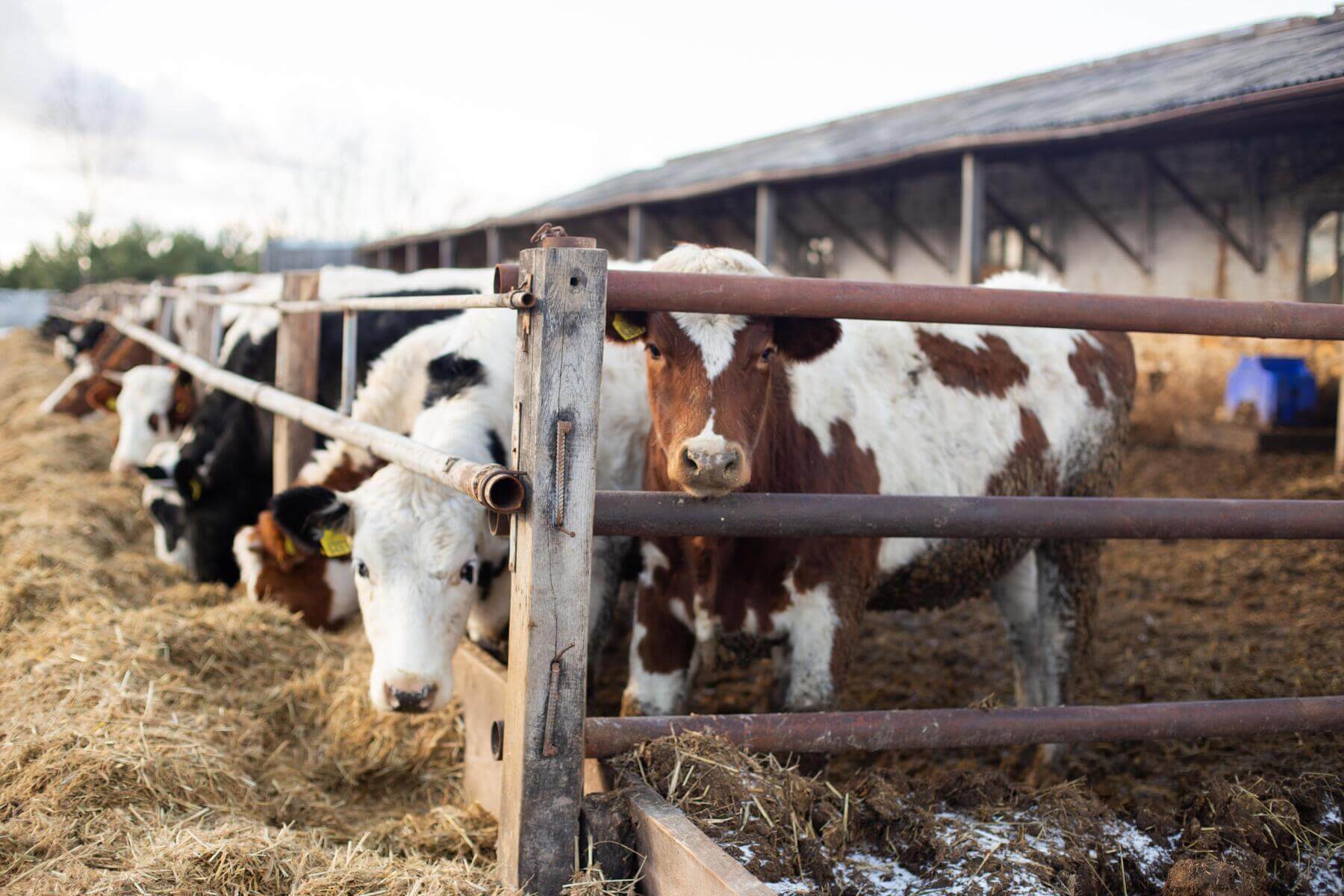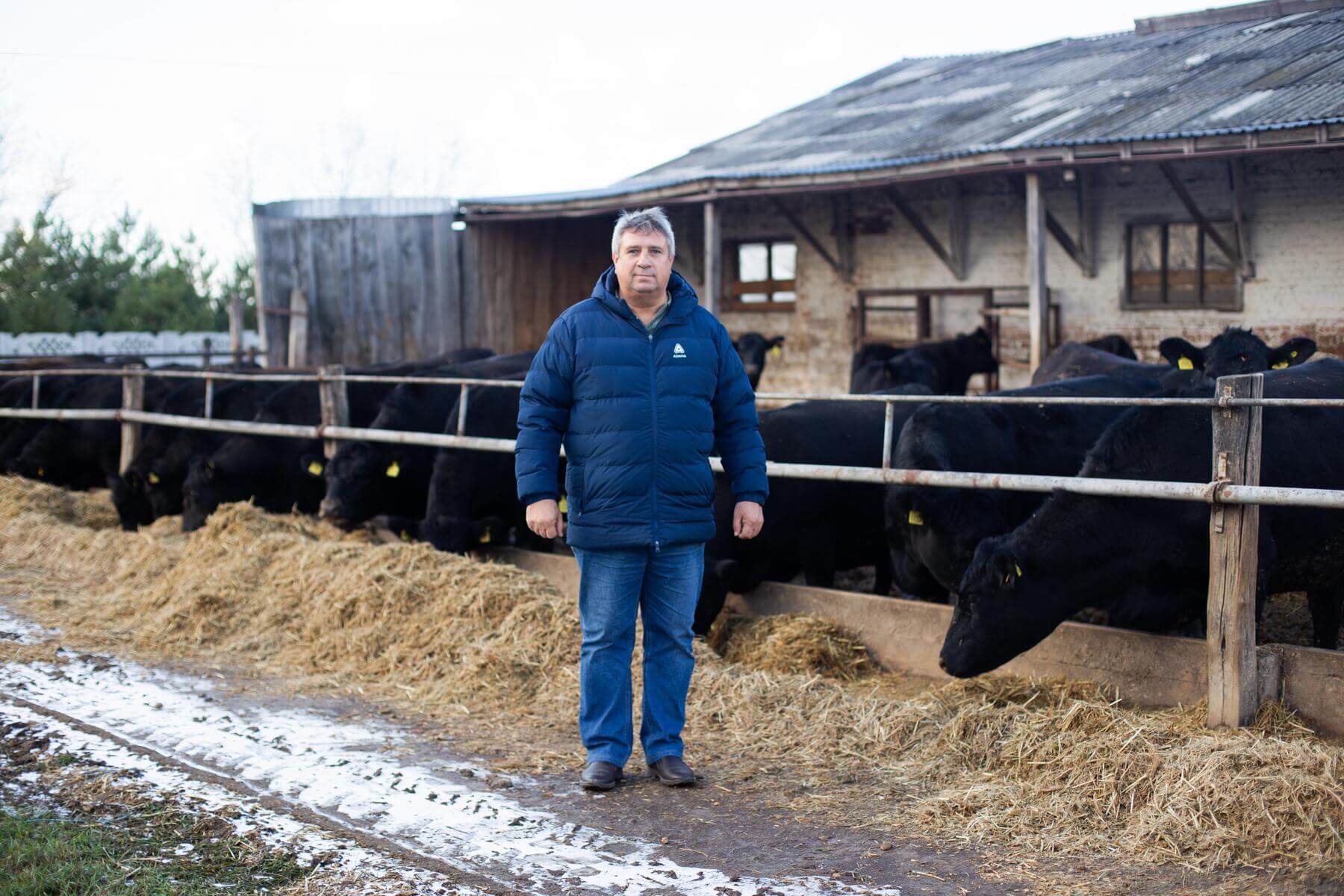The village of Lukashivka is located 15 kilometers from Chernihiv. At the entrance to the village, to the left of the road, there is an agricultural enterprise with 1500 hectares of land. Naporivske specializes in growing sunflower, wheat, and potatoes, and has its dairy farm. Before the full-scale invasion, it had 316 heads of cattle, including 175 cows. The company produced 3 tons of milk per day.
In the first days of the full-scale invasion, it was from here that milk was taken to Chernihiv because they knew that no one would come for it. That was until March 9, when the Russians entered the village. Daria Yanushkevych found out how the Naporivske enterprise survived the occupation and how it continues to recover 1.5 years after the shelling.

Photo: Anna Barbeniuk
“They ate our animals and our meat”
“On the first day of February 24, 2022, we were told that no one would come for milk: the war had broken out. We decided to deal with the situation on our own, and came to the conclusion that we would milk the cows and distribute milk for free,” recalls Hryhoriy Tkachenko, head of the Naporivske enterprise.
Employees and residents of Lukashivka were informed about the free milk distribution. Everyone went to the edge of the village to take milk for their families. Up to 500 liters of milk were distributed per day, and another 2500 liters were sent to Chernihiv. One of those who came for milk was 71-year-old Mariya Pastushenko. She says she was scared, but had no choice.
“We were scared, but we tried to hold on. I decided to make cheese from the milk in the house. I added different spices, cooked it, and brought it to the Ukrainian soldiers who were defending our village. I cooked soups at home and brought them to our guys. I remember how I cooked cheese with spices, took it to them, and they thought those specks were something extra and started taking them out until I told them that I made it tastier especially for them,” says Mariya Pastushenko with a smile on her face.

Maria Pastushenko. Photo: Anna Barbeniuk
The Russians entered Lukashivka on March 9, 2022. They set up equipment in people’s yards, streets, and gardens, and lived in the homes of the locals. More than 30 houses were destroyed to the ground; today they are being restored by volunteers. All 16 of the company’s premises were destroyed or damaged. But the premises are not the main thing, says Hryhoriy Tkachenko. The worst part is that 70% of the animals were lost during the occupation.
“When we entered the farm, it was a scary picture, not for the faint of heart. The cows were lying on the ground, crows were flying over them, and we couldn’t even approach,” recalls the head of Naporivske. “For a long time, we didn’t dare to do it because we were worried that the animals could be mined, as the premises were mined. The Russians ate our animals and our meat. They ate 158 heads of cattle, including 105 cows. Many animals were wounded, and they suffered a lot of stress.”

Photo: Anna Barbeniuk
Animals that survived the occupation have not recovered in 1.5 years
During the occupation, 50% of the animals on the farm were killed, and another 20% died due to injuries. Because the territory of the Naporivske farm was mined, the cows were milked for the first time 40 days after the village was liberated.
“The best animals of our production were killed. There is only one young cow left, which is many times less productive than the cattle we had before. We used to collect 3,000 tons of milk a day, but now we collect only 500 liters,” says Tkachenko, “We are working to improve the situation. The young cattle we have left will return to the productivity of the animals that died during the occupation in 2-3 years. That is, we need 3 to 5 years to return to the production volumes we had before February 24, 2022.”
The milking parlor was hit by a rocket in March 2022, and the cooling shop was also damaged. They managed to restore them within three months after the liberation.
Cows from Scotland
1.5 years after the de-occupation of the village, cattle breeding began to develop in Naporivske. In the summer, 20 cows of the Aberdeen Angus breed were brought to Lukashivka. These early-maturing cattle produce marbled meat and are expected to become one of the company’s specialties in the future.
“Aberdeen meat is in high demand. It is often purchased in different countries of the world, including Europe. That is why, in my opinion, there should be no problems with sales. This is one of the reasons why we decided to take a chance and start working in this industry. To buy Aberdeen Angus, we took out a loan of UAH 1.3 million,” says Hryhoriy Tkachenko.

Hryhoryi Tkachenko. Photo: Anna Barbeniuk
Since the summer, the farm has already had two Scottish-bred calves. There are plans to develop and build up the company’s cattle breeding business, which, according to Tkachenko, will eventually become one of the leading ones.
“Ukraine’s livestock industry is going through a difficult period. The dairy industry and cattle breeding in general are in decline, but they need to be developed. If everything remains as it is today, our grandchildren and great-grandchildren will only see cows, pigs, and goats in the zoo. But we are trying to maintain the level we have now, and even start something new and develop — from keeping to selling. Animal husbandry is our daily, favorite job,” summarizes the head of the Naporivske enterprise in Lukashivka.

